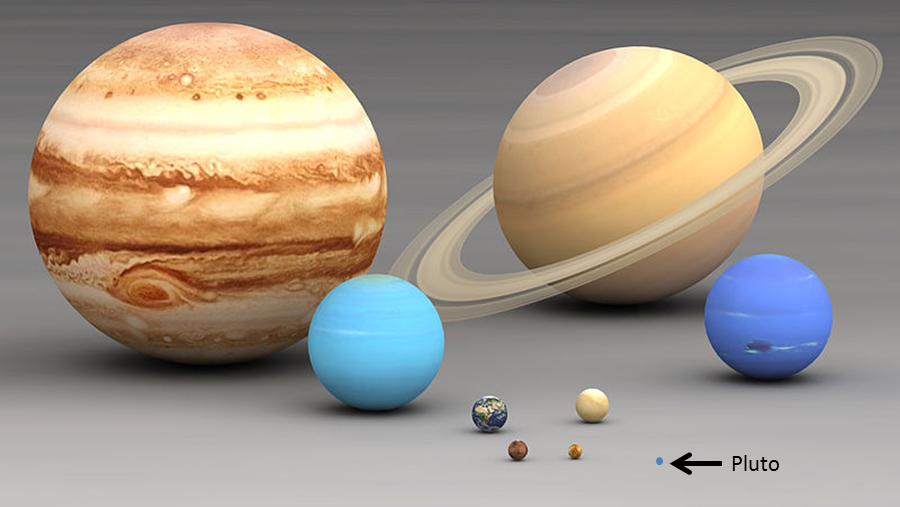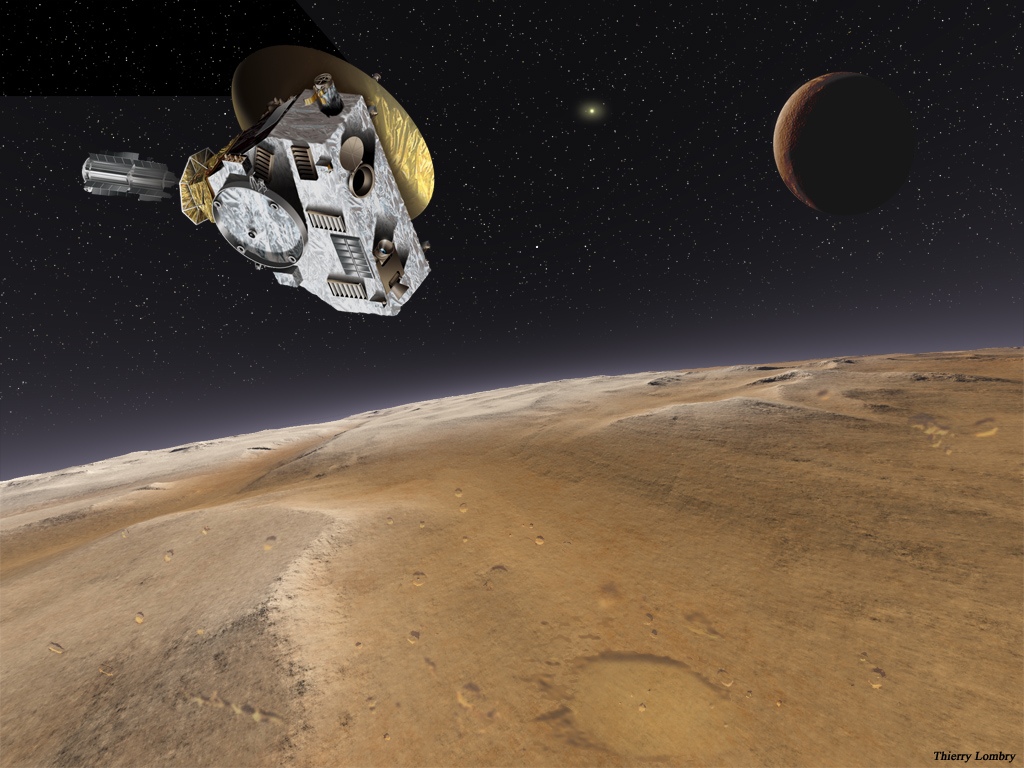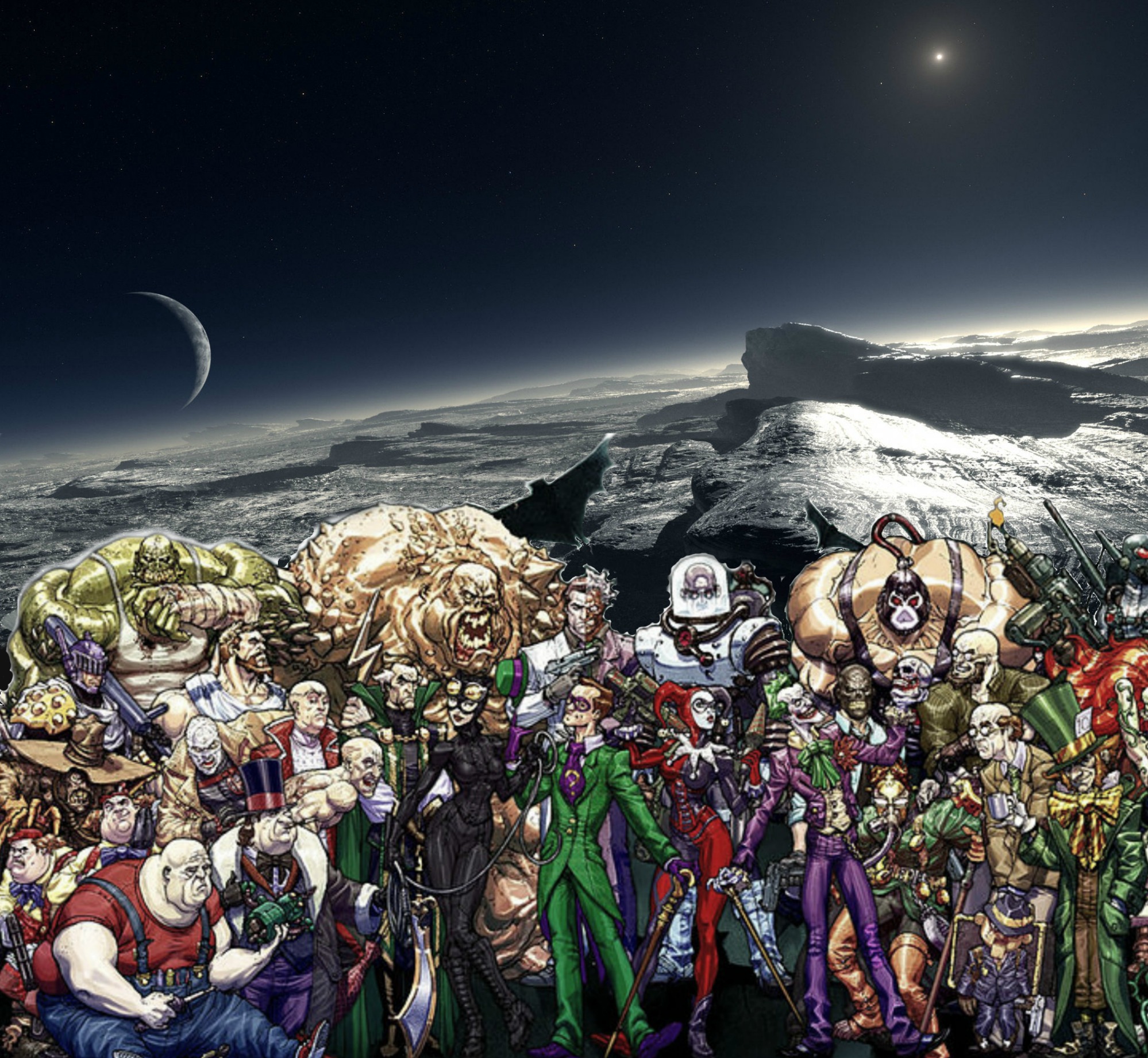As the New Horizons spacecraft approaches the amazing Pluto system for an historic flyby in July, 2015, it’s inevitable we should discuss whether Pluto is a proper planet or only a “dwarf planet” as the International Astronomical Union (IAU) voted in 2006. The IAU’s definition of a planet says that it must (1) orbit the sun, (2) be large enough to be rounded by gravity, and (3) have cleared out its orbit [by flinging away or absorbing the smaller bodies that once tried to share that orbit]. Pluto meets requirement parts 1 and 2 but not part 3, so it was defined as merely a dwarf planet, and according to the IAU a dwarf planet is not a subcategory of planet 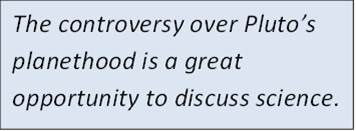 but is a separate category. In my opinion this was a mistake. However, the interest in Pluto’s planethood is a great opportunity to discuss science! So let’s not miss it. Here are nine reasons why Pluto is a planet.
but is a separate category. In my opinion this was a mistake. However, the interest in Pluto’s planethood is a great opportunity to discuss science! So let’s not miss it. Here are nine reasons why Pluto is a planet.
1. Pluto is not that small
When people explain why they think Pluto is not a planet, they say it’s just too small. Neil deGrasse Tyson asks, if Neptune were the size of a Chevy Impala, then what size car would Pluto be? His answer: it would be a matchbox car. Thus, “Pluto had it coming.”
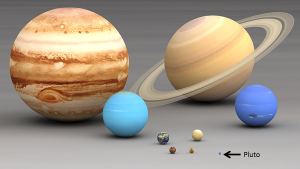
In my opinion, this favoritism toward larger planets is anthropocentric bias, similar to thinking that planets revolved around the Earth. It turns out the majority of planets are indeed small, and Pluto is in the middle of the size range. Using Mike Brown’s list of probable dwarf planets, keeping all the bodies that are larger than 300 km (because they are probably large enough to be rounded by gravity), it turns out there are 184 bodies in our solar system large enough to be planets. Of these, Pluto is the 17th largest.1 That puts Pluto in the 88th percentile for largest planets! Since we are still discovering smaller planets, its rank is likely to climb to somewhere between the 90th and 95th percentile. That will give Pluto an “A” grade as one of the top planets of our solar system.
But in any case, size is not the essential feature of classification in other branches of science. Let’s look at some examples:
| Classification | Small | Large | Size Factor (mass) |
|---|---|---|---|
| Planets | Kuiper Belt Object 2010GB174 (600x smaller than Pluto) | Jupiter | 95 Million times |
| Mammals | Etruscan Shrew | Blue Whale | 101 Million times |
| Reptiles | Brookesia micra chameleon | Dreadnoughtus schrani dinosaur | 361 Million times |
| Fish | Docypris progenetica | Whale Shark | 4 Billion times |
| Galaxies | Segue 2 | IC 1101 | 15.3 Billion times |
Here are some graphics that help to make this point:
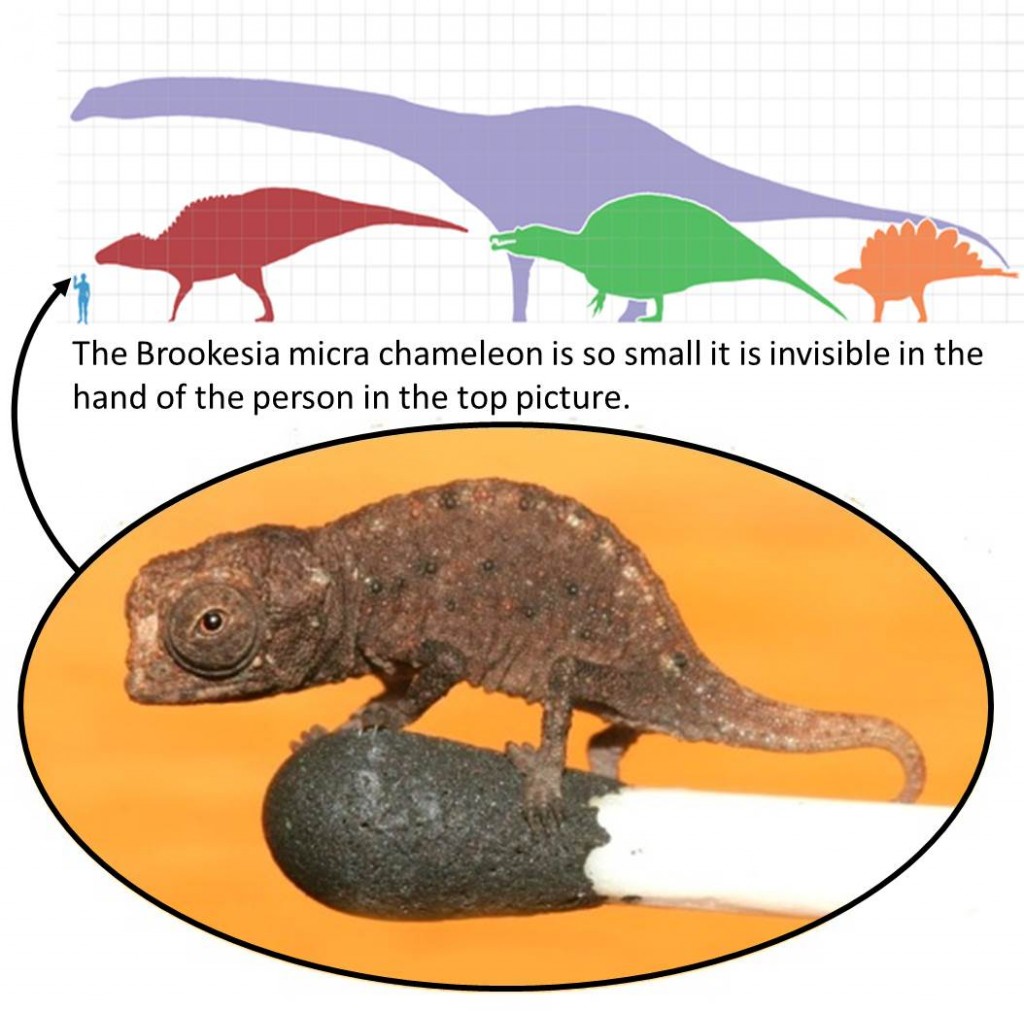
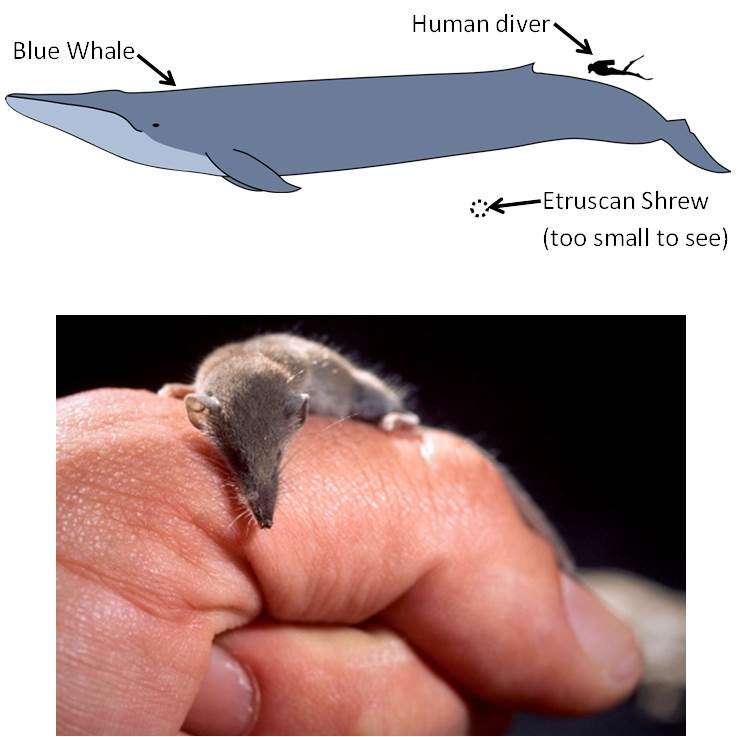
All these categories have size ranges that are bigger than the range of planets in our solar system. Are planets the only things in nature that aren’t allowed this beautiful diversity?
Pluto is mid-range in the sizes of planets. Returning to Neil deGrasse Tyson’s illustration, a Chevy Impala is actually 64 times longer than a Matchbox Car whereas Neptune’s diameter is only 21 times bigger than Pluto’s, so it turns out Neil’s example exaggerates by a factor of 3. In terms of volume, it exaggerates by a factor of 27. Even if it had exaggerated by a factor of 100,000 it would make no difference in helping the argument against Pluto. Reptiles, mammals, galaxies – so many categories of nature – have size ranges thousands or even hundreds of thousands times larger than the range between Neptune to Pluto.
Pluto is most definitely large enough to be a planet.
2. Pluto is not a comet
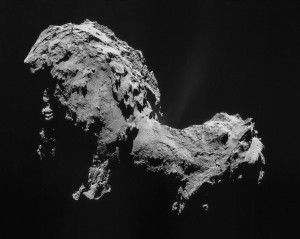
Neil deGrasse Tyson also says, “Pluto is my favorite comet.” He says that because of Pluto’s ice content, if it were put as close to the sun as the Earth then it would grow a tail. “That’s no kind of behavior for a planet,” he says, “Planets don’t have tails.” Thus, since it behaves like a comet, it must be a comet.
This “Pluto would grow a tail like a comet” meme is factually incorrect – a violation of physics – and unfortunately it’s repeated all over the Internet. It’s even in the Wikipedia article about Pluto. (Wikipedians: go fix that!)
It doesn’t matter that Pluto is partially ice. It’s only about 30% ice (by mass) while the other 70% is rock, but that’s neither here nor there. Planets can be made out of rock, metal, ice, liquid, or even gas. And planets with any of these materials can form a tail if put close enough to a star. We actually do know of some exoplanets that have tails. However, Neil makes a great point that we should classify bodies according to their prototypes. If Pluto were to behave prototypically like a comet, then maybe it should be classified as a comet. But if it behaves prototypically like a planet, then it should be classified as a planet. Let’s look at the physics to see what would really happen if Pluto were put closer to the sun.
Pluto is a fairly large body, massive enough for gravity to pull even rock and ice into its rounded shape. (That’s the geophysical definition of planet, by the way, and everybody agrees that Pluto is that large.) Not only that, it’s got enough gravity to hold an atmosphere, too. The escape velocity of Pluto is 1200 meters per second. For gas to sublimate and fly directly off Pluto to form a tail the way it does from a comet, it would have to leave Pluto’s surface with a temperature of more than 1,300° C, or about 2,500° F. Pluto would need to be hot enough to melt rock before it can form a tail like a comet. Not even Mercury is close enough to the sun to melt rock.
Let’s compare this with the comet being visited by the Rosetta spacecraft. The comet is so small that its gravity can’t pull it into a round shape, and its escape velocity is only about 1 meter per second. Gas leaving the surface of this comet needs to be 1/1000th of a degree above absolute zero in order to fly off and form a tail. And since the surface of the comet is far, far hotter than that, the gas actually does fly off and does form a tail. The reason comets form tails while planets generally don’t is because they are so small. Pluto is a giant compared to comets.
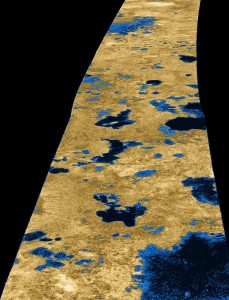
So if you put Pluto near the Earth, the gas will not advect from the surface all the way to space to form a tail. Instead, the sublimating gas will be held down by gravity to form a thickening atmosphere. When enough ice has sublimated and the atmosphere’s pressure is high enough, the methane ice will melt into liquid instead of sublimating into gas, and Pluto will form rivers and oceans of methane, similar to the methane lakes of Titan. It would become an ideal location for life to take root. Comets don’t behave like that.
Pluto couldn’t maintain those conditions forever. Gas escapes from every planet by several mechanisms including Jeans escape, ion pickup, and bulk plasma escape along the tail (all vastly slower than advecting directly out from a comet). Mercury cannot keep an atmosphere so close to the sun, either. Mars’ atmosphere is much thinner now than it was billions of years ago because the gas has mostly escaped. Even Earth has a thin tail of gas flowing away from it. But planet tails are not like comet tails. Their gas only escapes from the upper layer of their atmospheres, from their exospheres, and even just a fraction of that exospheric gas is able to escape so it is very slow. The atmospheres are layered. Comets don’t behave like that.
So using Neil’s argument, but correcting the part about the escape velocity, we should ask if Pluto would be like a comet or like a planet when placed near the sun.
It’s pretty obvious that Pluto would behave like a planet.
3. The IAU definition unfortunately mixes up being with doing
Philosophers wonder whether it is more important to be or to do. According to the graffiti on the wall:

Saying a planet must be round by its own gravity is a part of its being. Saying it must have cleared its orbital neighborhood is a part of its doing. There’s also an implicit requirement that a planet must not be so big that it starts nuclear fusion, because then it would be a star. That’s part of its being. And furthermore, the IAU says a planet must orbit a star instead of going rogue or orbiting another planet. That’s more of its doing. This mixed-up set of being and doing requirements reflects the chaos of human history, because we didn’t understand what planets were in the earliest days of astronomy, and we never said, “let’s just start over and create a completely new system that makes sense.”
Mixing these would be crazy in any other branch of science. Suppose we said that unless a species eats meat, then it’s not a real mammal; it’s just a dwarf mammal. Or consider the tiny chameleon pictured above. It could never clear the alligators out of its neighborhood, so it wouldn’t qualify as a true species of reptile; it’s just a dwarf reptile, and dwarf reptiles are not reptiles. Historical note: at one time the biologists argued whether whales should be classified as mammals or fish. They eventually realized that being a mammal is more fundamental than doing like a fish.
That’s not to say that both being and doing classifications don’t still exist in biology, because they do. Some mammals and some reptiles are classified as carnivores while others are classified as herbivores. Biologists just don’t intermix the doing and being categories into the same classification.

4. The ability to clear an orbit depends on the star, not just the planet
It has been argued that the notion of a planet “clearing out its orbit” is too vague, so it has been made more rigorous by defining the “scattering parameter”. This parameter quantifies the ability of a planet to scatter all the smaller bodies out of its neighborhood. It is calculated as the planet’s mass squared divided by its orbital period, multiplied by another factor that describes the swarm of smaller bodies in its path (which we can consider a constant factor). In our solar system, all the planets with a scattering parameter larger than unity have mostly cleared out their orbits, whereas those with scattering parameters smaller than unity share their neighborhood with a swarm of other bodies that have not been cleared away. So it seems that this scattering parameter really works! Pluto is one of the largest bodies that has a scattering parameter less than unity, and there is a gap of over 4 orders of magnitude between scattering parameter of the weakest major planet (Mars) and the strongest dwarf planet (Pluto). This is shown in the figure, below. Doesn’t this tell us without any doubt that Pluto is not a true planet? Some people certainly think so.
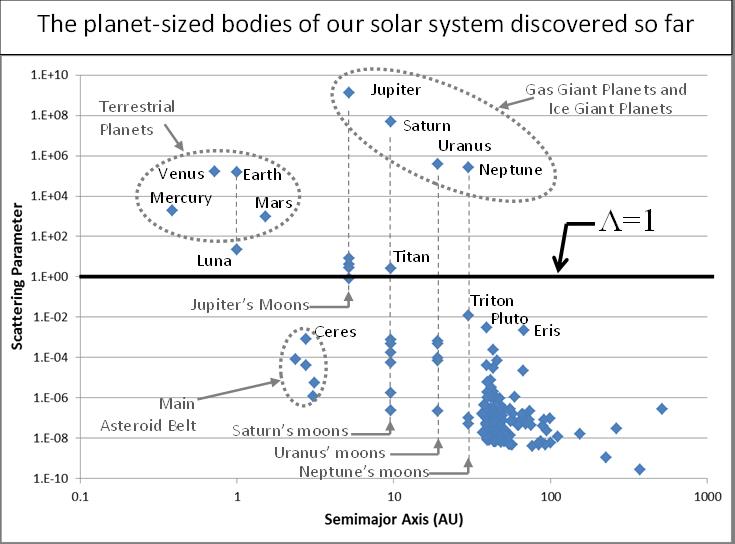
While it seems simple enough, it gets fuzzy as soon as we consider other solar systems. For one thing, the scattering parameter depends not only on the planet itself, but also on the size of the star it orbits. That’s because the planet’s orbital period is shorter when the star is more massive and vice versa. Let’s consider a couple of examples. One day we will find a body the same size and mass as Saturn’s little moon Tethys but orbiting in the habitable zone of a red dwarf star. That’s not an unlikely scenario: there are billions and billions of red dwarf stars in our galaxy. It turns out that this Tethys twin will have a scattering parameter greater than unity everywhere in that star’s habitable zone. That means Tethys is a major planet when it’s at a red dwarf star.
Some day we will also find a twin of the Earth in the habitable zone of a large, O-type star. Everywhere within that zone, the Earth twin will have a scattering parameter that is two orders of magnitude too small to be a major planet. Sadly, the Earth twin will be classified as only a dwarf planet at that star.
So when we find these worlds, we will make this poster:
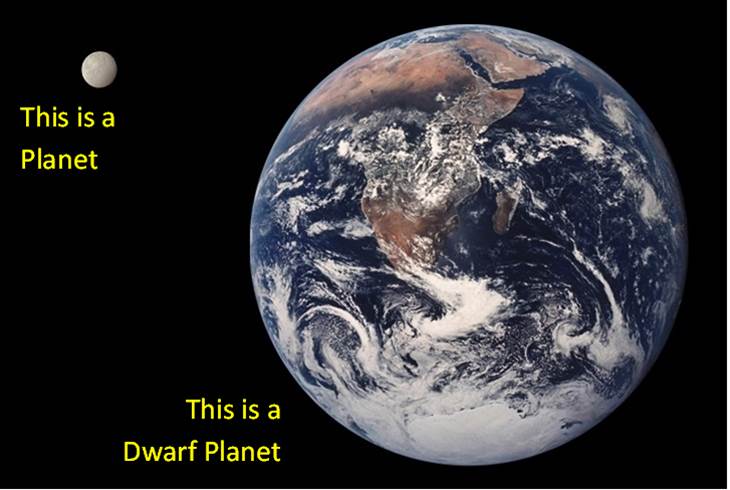
What if biologists did classification like this? We could ask them, is a dog a mammal? They might say, well, it depends upon the island where the dog lives. If it’s a big island that supports a population of tigers, then the dog is just a dwarf mammal, and dwarf mammals are not mammals. But if it swims to a smaller island that doesn’t support tigers, then it can dominate the island and then it’s not a dwarf mammal any more. Then it is a true mammal. (Hmmm…)
Pluto, being a medium-sized planet, would clear its neighborhood around our sun if it were at the orbit of Venus or Mercury. It would almost do so if it were at the orbit of the Earth. It would definitely do so if it were in the habitable zone of any star slightly less luminous than our own, which includes the vast majority of stars in the universe. Therefore, if there is life beyond the Earth, one could argue that it is likely to be found on a medium-sized planet like Pluto. (And by the way: in terms of percentile, Pluto has one of the highest scattering parameters of all the planet-sized bodies in our solar system.)
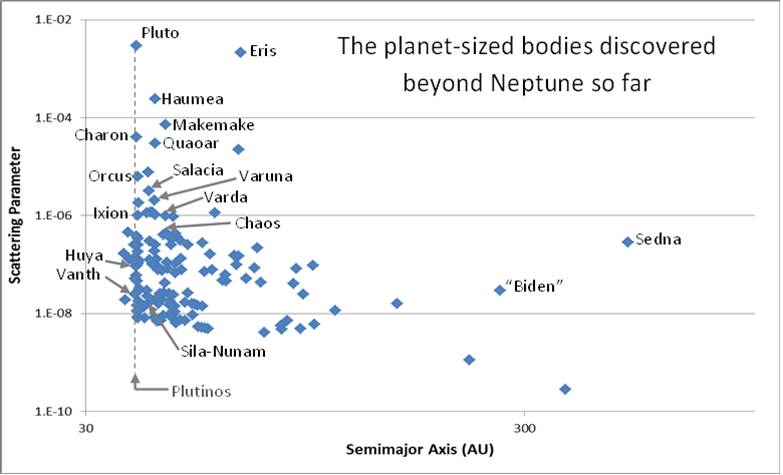
The scattering parameter gives us great insight into the dynamics of planets in a given solar system at a snapshot of time, and therefore it allows us to create subcategories of planets based upon how they have behaved in their current or (presumed) past environments. This is how the scattering parameter was intended to be used. However, most of us will agree that it doesn’t capture the essence of planethood, itself. We feel something is wrong when we look at the poster with the twins of Tethys and Earth. The problem is that dynamical requirements (doing) are relative whereas physical requirements (being) are universal.
5. We can’t create good dynamical definitions from a sample of one
Clearing out an orbit isn’t something that a planet does all by itself, unaffected by neighboring planets. It is all interconnected. It takes a solar system village to raise a planetary child.
A lot has been made about the gap of four or five orders of magnitude between the scattering parameters of Mars and Pluto. Where are the planets with scattering parameters closer to unity? According to theory, they could have existed, but maybe the giant planet migrations eliminated them. That might not have happened the same way in other solar systems. As far as we can tell, our solar system is the oddball. Whatever dynamics happened elsewhere did not happen here and vice versa.
So far we have studied only one solar system in great depth, so our dynamical definitions are based on a sample of one. It’s unlikely that a sample of one oddball solar system is giving us an adequate picture.
6. Pluto’s planethood indicates the reality of nature
As I discussed in a prior post, the old concept of the planets was that they are gods ruling over the Earth, each reigning in its own orbit. After we realized the planets are worlds like the Earth going around the sun, we continued to believe they are an orderly, clock-like system with no sharing of orbits. Only in the most recent century have we realized that countless smaller bodies share and cross the orbits of all the planets, and an entirely new zone of the solar system exists beyond Neptune (the Kuiper Belt) where sharing orbits is normal, not an exception. Furthermore, we started realizing that even the inner planets have been moving around and messing with each other’s orbits. No part of the solar system is clock-like when you consider how it behaves over long enough timescales. When the IAU changed the definition of a planet to exclude all the worlds of the third zone, it was an attempt to keep the old clock-like view intact with planets that reign like gods within their own orbits. But that’s not the reality of nature. To include Pluto as a planet is to embrace the new view of the solar system, the reality that it is a wonderfully messy, ever-changing place.
Furthermore, we started realizing that even the inner planets have been moving around and messing with each other’s orbits. No part of the solar system is clock-like when you consider how it behaves over long enough timescales. When the IAU changed the definition of a planet to exclude all the worlds of the third zone, it was an attempt to keep the old clock-like view intact with planets that reign like gods within their own orbits. But that’s not the reality of nature. To include Pluto as a planet is to embrace the new view of the solar system, the reality that it is a wonderfully messy, ever-changing place.
7. Pluto’s planethood enhances education
Right now, most elementary and secondary education focuses on the eight largest planets, creating the outdated impression of a static solar system where everything important is closer to the sun than Neptune. That’s a bias of perspective just like the geocentric bias of earlier generations. Including Pluto and the hundreds of worlds in the Kuiper Belt as planets will change our perspective and change the language of the classroom. Imagine when teachers say, “The planets are in four zones in our solar system: an inner zone with rocky planets; a middle zone with giant planets; an outer zone with hundreds of newly discovered, medium- and small-sized ice planets; and a far outer zone (the Oort Cloud) with planets we have not even begun to discover or explore.”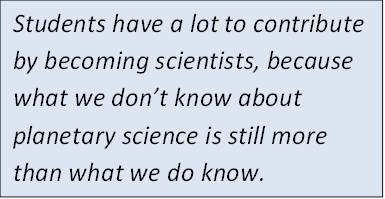 That will create an entirely new understanding of reality. It is a reality freed from the artificial boundaries of anthropocentrism. It is a reality full of unsolved mysteries about planetary science and our place in the cosmos. It is a reality where students have a lot to contribute by becoming scientists themselves, because we are communicating the fact that there is more we don’t know about our solar system than what we do know.
That will create an entirely new understanding of reality. It is a reality freed from the artificial boundaries of anthropocentrism. It is a reality full of unsolved mysteries about planetary science and our place in the cosmos. It is a reality where students have a lot to contribute by becoming scientists themselves, because we are communicating the fact that there is more we don’t know about our solar system than what we do know.
Students today aren’t getting that impression when we tell them there are exactly eight planets, all of them were discovered long ago, they orbit in these eight regular paths, and that’s that.
8. Pluto’s planethood conveys the excitement of discovery
Even beyond the classroom, the public will be gripped with the excitement of discovery when we acknowledge hundreds of planets beyond Neptune. Extending the horizons of our civilization wasn’t only for people who lived hundreds of years ago. One day – I think within a century (or certainly within two) – we will build scientific observatories and transportation hubs on these many worlds of the Kuiper Belt. Shoving them out from planet status has tended to push them from the public’s consciousness and thus it has reduced the excitement of discovery.
9. What Would Spock Say?
And finally, reason number nine: what would Spock say as his spacecraft approached one of these smaller, icy worlds of the Kuiper Belt? Or if you prefer, what would Skywalker say?
In other words, how do civilizations think of planets when they are no longer merely looking at them through telescopes, when they are traveling to them to live and to work? We are in the process of becoming a spacefaring species, and the perspectives of Spock and Skywalker will soon be our own. We will land on planets, establish outposts on them, grow food in their soil, and raise our babies on them. The planets of our solar system – including the Kuiper Belt – are destined to become ever more physical to us: the solid ground beneath our feet, not tiny points of light in the sky.  The IAU can’t claim the naming rights for everything in space when people live there. The skies won’t belong to the people with telescopes, but to the people with spaceships. They are the ones who will create the definition of a planet.
The IAU can’t claim the naming rights for everything in space when people live there. The skies won’t belong to the people with telescopes, but to the people with spaceships. They are the ones who will create the definition of a planet.
In Star Trek Enterprise there was an episode “Rogue Planet” about a world that did not orbit a star. The characters called it a planet, nevertheless. In Star Wars there was the ice planet Hoth that had not cleared its orbital neighborhood of the many asteroids. The characters called it a planet, nevertheless. Something inside us knows that a planet’s being will trump its doing when people experience it as a physical world.
What will your granddaughter say as she approaches Eris to repair its node of the observatory? What will your great grandson say as he approaches Pluto to check the progress of a robotic construction crew?
I think it will be something like this:
Sensors detect that we are approaching a planet, Captain.
Footnote: 1. This includes seven moons and one dwarf planet that are larger than Pluto, but Mercury is also smaller than some of the moons.
